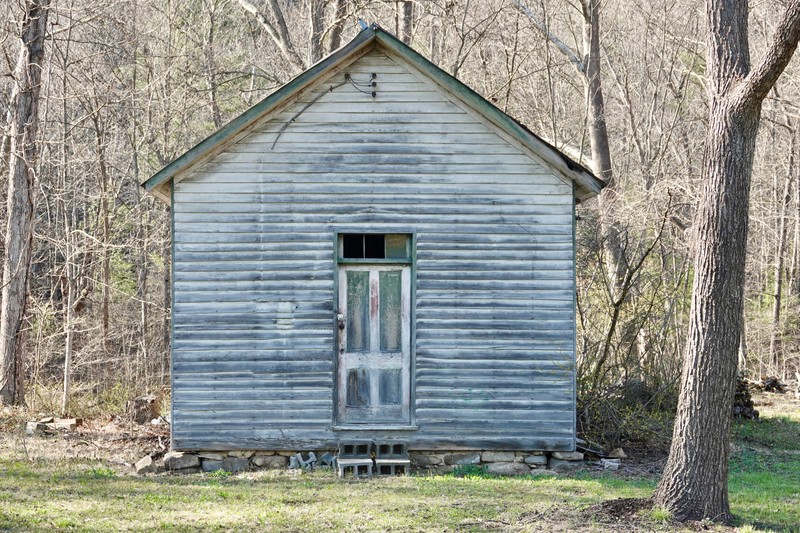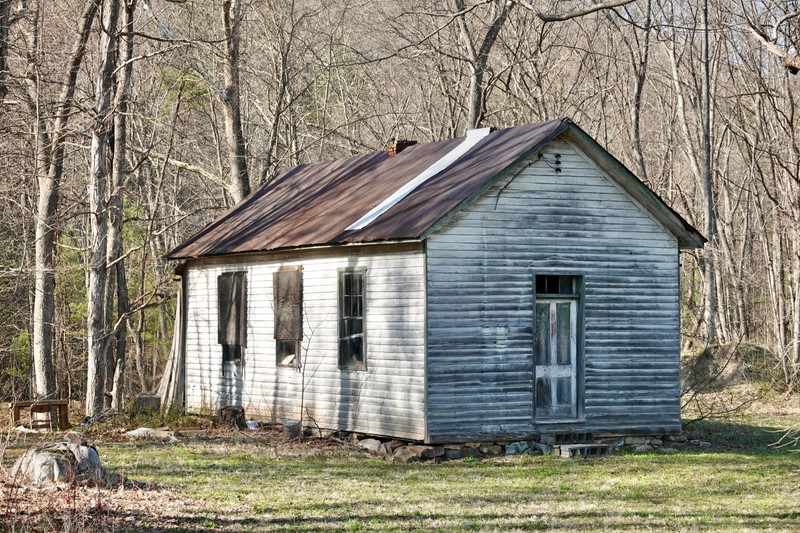Sugar Grove School (1909 - ?)
Introduction
Text-to-speech Audio
PRIVATE PROPERTY. EXERCISE CAUTION AS YOU OBSERVE FROM THE ROAD.
This wooden frame structure served students and families who lived just outside of Wardensville. Sugar Grove School was sometimes referred to as the “Heishman School" due to its close proximity to the Heishman Cemetery and the fact that many Heishman children attended. Sugar Grove School is believed to have provided a general education to students of various ages and skill levels beginning in 1909, . Sugar Grove School was used before increased population and organization of county school boards led to standardization and consolidation of rural, one-room houses that once served small communities limited by travel.
This is a Mountain Heritage Trails project made possible through the support of the Hardy County Convention & Visitors Bureau, the Appalachian Forest National Heritage Area AmeriCorps program, and the West Virginia University Fulcrum Project.
Heritage Trail Project Coordinator: Shefa Nola Benoit
Researchers: Eva Blankenhorn & Shefa Nola Benoit
Images
Heishman/Sugar Grove School 2022

Heishman/Sugar Grove School 2022
.jpg)
Heishman/Sugar Grove School 2022

Backstory and Context
Text-to-speech Audio
Nestled in a quiet grove of trees just outside of Wardensville, Sugar Grove School appears just as it did to students in the early 1900s. Referred to by some sources as the Heishman School, it is believed that the schoolhouse opened to students in grades one through eight in 1909. (There were 2 schools sometimes referred to as the Heishman School. The other is Trout Run School.) Relying on nothing but their own two feet to get to and from classes each day, students were expected to arrive for a 9:00am start time. The school days ended at 4:00pm and the semester lasted for about six months at a time. Like many other rural communities in Hardy County, the one served by the Sugar Grove School was diverse, but not every child in the area would have attended school. Some stayed home to help their parents on the farm, and others to help raise younger siblings. Those who did attend recall school subjects including music, reading, writing, math, nature studies, United States and West Virginia History.
According to former Wardensville area teacher J. Allen Hawkins, there was no high school offering higher learning in Wardensville before 1920, meaning that any students who wished to further their education would have to travel elsewhere. This was a possibility for students who could afford to travel or even board in places like Moorefield that offered such opportunities, but it was unlikely that many children were afforded this opportunity until schoolhouse consolidation began.
Today, Sugar Grove School is beginning to show its age. Its weathered boards still bind the four walls together and if you listen close enough, you might just hear giggles and song through the large side windows.
Cite This Entry
Benoit, Shefa Nola. "Sugar Grove School (1909 - ?)." Clio: Your Guide to History. August 10, 2023. Accessed March 30, 2025. https://theclio.com/tour/2291/5
Sources
Tilton, John Littlefield, Prouty, William F., Tucker, Rietz Courtney and Price, Paul H.. Hampshire and Hardy Counties. West Virginia Geological and Economic Survey. Morgantown: Morgantown Print. and binding. 1927.
Whitson, Suzanne. Remembering Early Hardy County, WV Schools: The 1976 Bicentennial Project. Moorefield, West Virginia: Hardy County Board of Education, 1976.
MacMaster, Richard K. The History of Hardy County, 1786-1986. Moorefield, W. Va.?: Hardy County Public Library, 1986.
Hardy County Board of Education. Handbook for Hardy County Teachers, 1960-61. Moorefield, W. Va.: publisher not identified, 1960.
Photograph Courtesy of Jennifer Thornton, PhD
Photograph Courtesy of Jennifer Thornton, PhD
Photograph Courtesy of Jennifer Thornton, PhD

